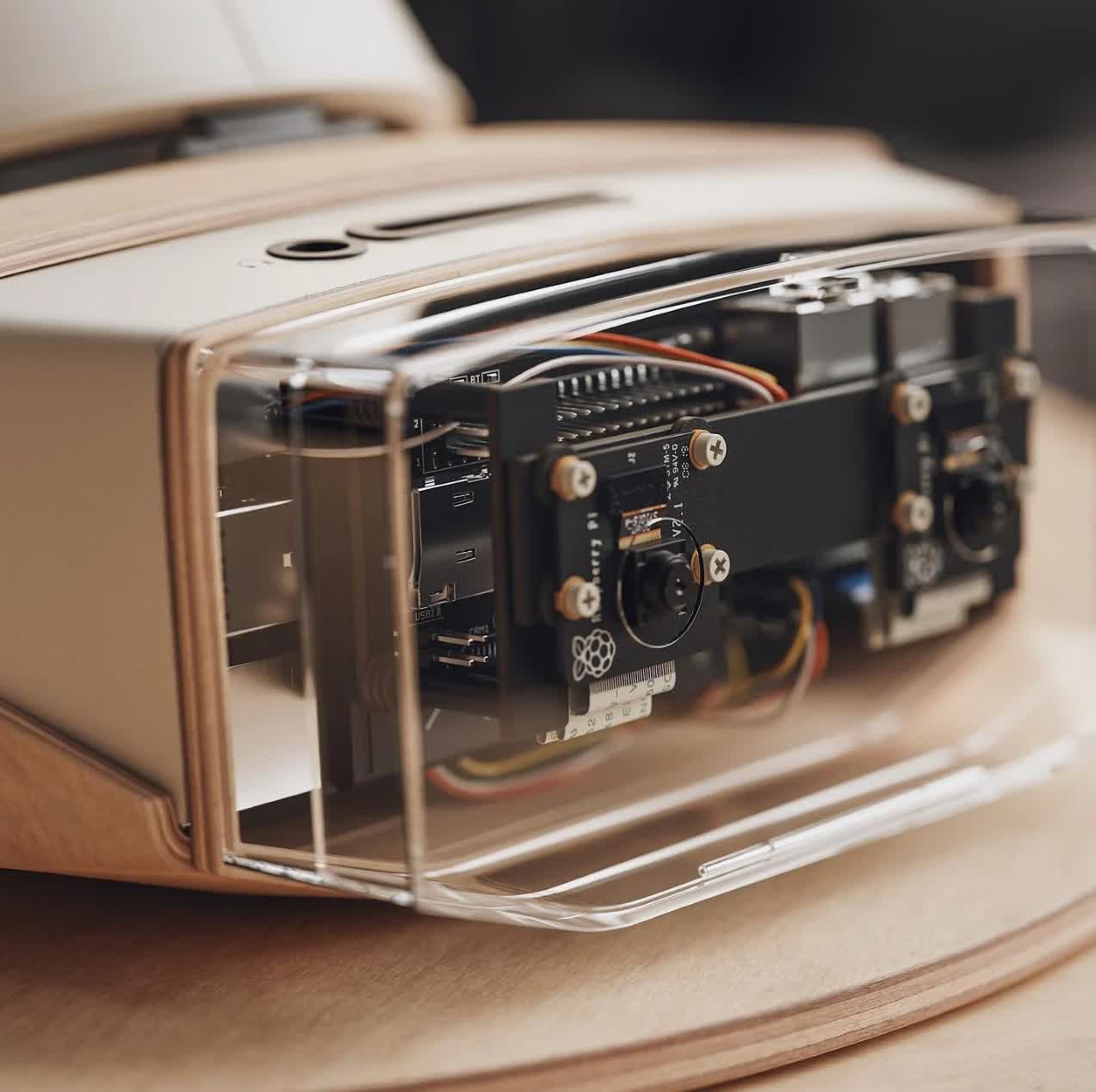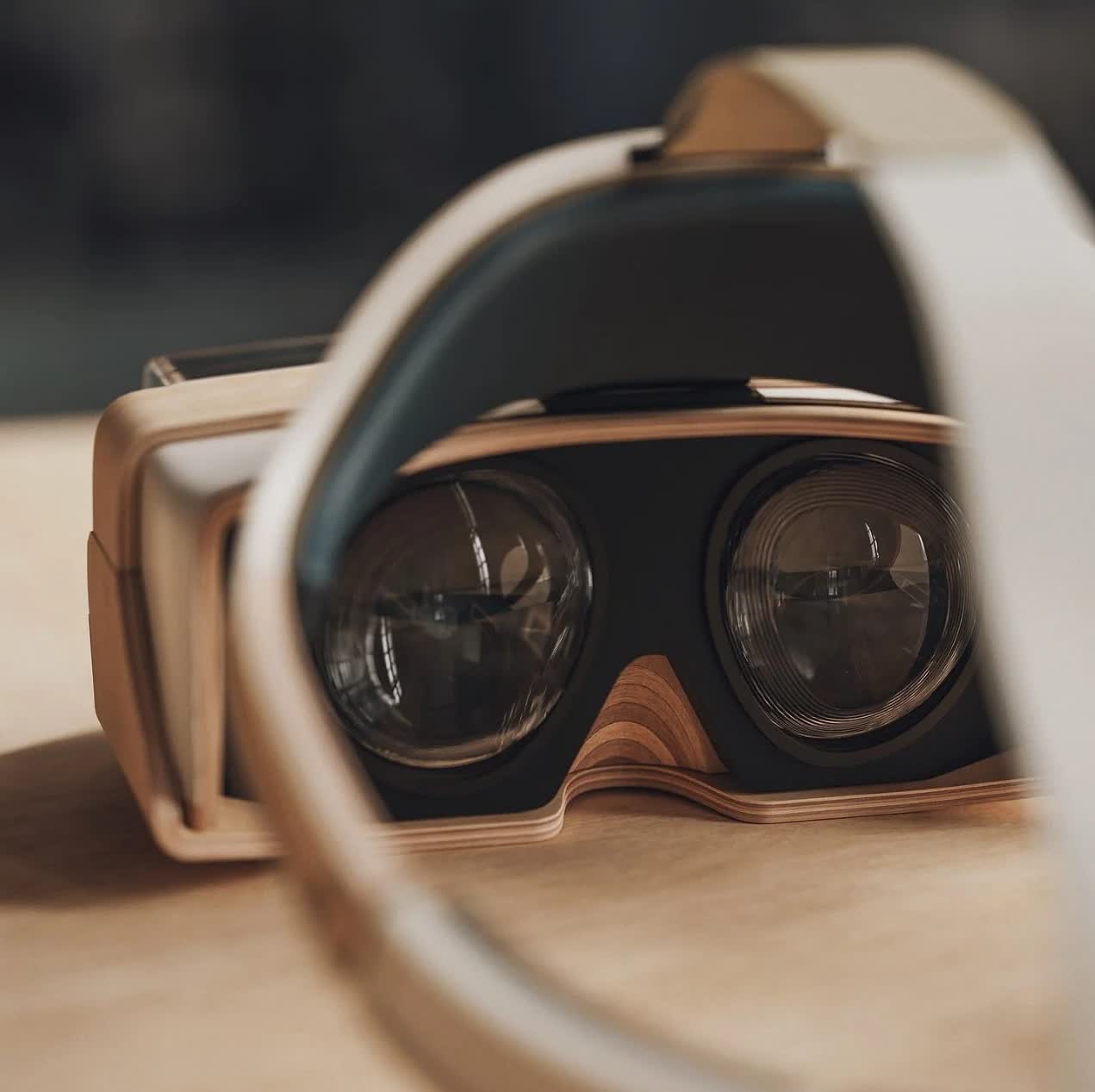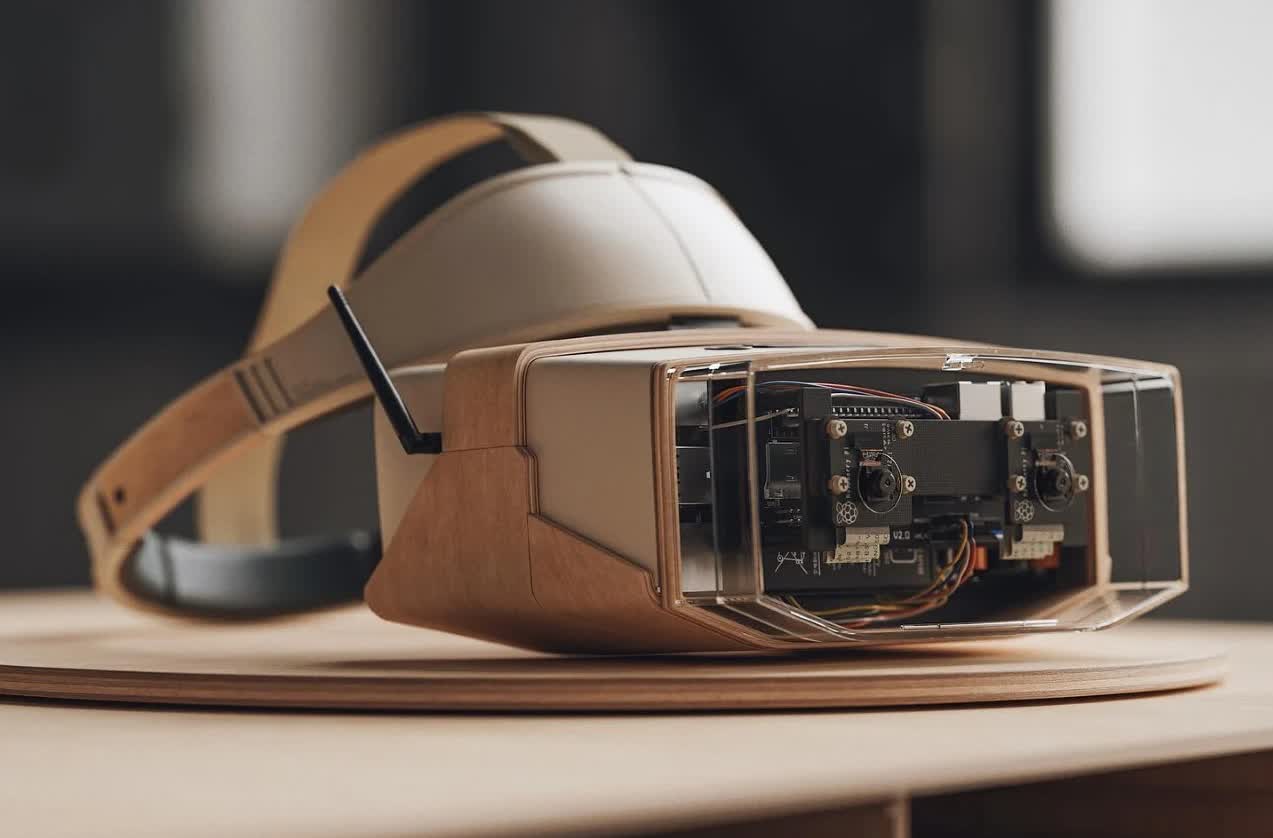Through the looking glass: A freelance CGI artist out of Denmark has rendered a stunning 90s-era virtual reality headset based on a modern Raspberry Pi. The Stereoscopic Display System from Moonshake3D was reportedly created over the course of a month using Blender. The images depict a three-dimensional, stereo-immersive 64-bit video game system based on a Raspberry Pi.
It provides a glimpse of what a 90s-era VR headset could have looked like had the Pi existed back then.
The artist told Designboom that he originally wanted to make a lot of super detailed textures for the project, but really liked how the wood stood out in contrast to the white plastic case. The clear cover showing off the internals is a nice touch, too.

Virtual reality did exist back in the 90s but it was quite rudimentary and involved bulky hardware with extremely limited capabilities. This setup from 1992, which featured a massive headset, required the user to sit in a tank-like pod while playing the game.
Things got a bit better when Nintendo's Virtual Boy came along in 1995, but not much. The 32-bit system was far slimmer than earlier efforts but still required users to sit at a table to use it. Its wireframe graphics also left a lot to be desired.
Related reading: Virtual Reality Then: A Look Back at the Nintendo Virtual Boy
Nintendo discontinued the system a year later, cementing its place as the lowest-selling standalone console ever from the Japanese gaming giant. Sega was also working on a VR headset for use with its Genesis but canceled the project while it was still in development.

As pretty as the Stereoscopic Display System is, it probably wouldn't be very comfortable to use as there doesn't appear to be sufficient padding on the edges of the goggles that would make contact with your face. The one-size-fits-all nose slot doesn't appear terribly accommodating, either.
